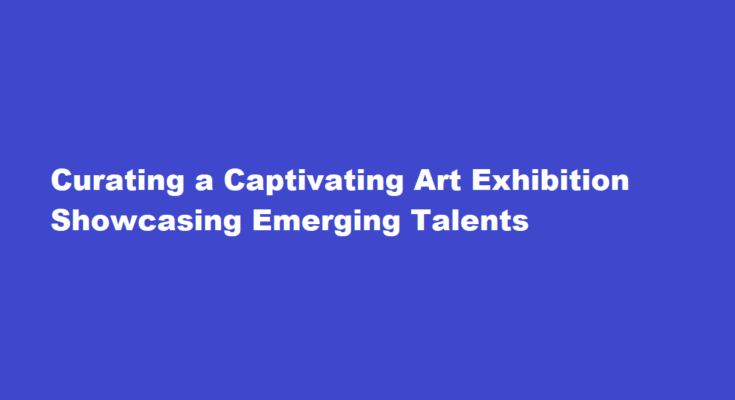Introduction
Art exhibitions serve as platforms to celebrate creativity and showcase the diverse talents of artists. For emerging artists, an exhibition can be a pivotal moment in their careers, providing them with exposure and opportunities to connect with the art community and potential collectors. As a curator, your role is crucial in bringing together a compelling and cohesive show that captivates the audience and highlights the potential of these budding artists. In this article, we will explore the steps to curate a captivating art exhibition featuring emerging artists.
Define the Vision
Begin by defining the vision and theme of the exhibition. What message or narrative do you want to convey to the audience? Consider the common threads or styles that tie the emerging artists’ works together. An exhibition with a clear and compelling theme creates a more engaging experience for visitors and enhances the impact of the artworks.
Research and Select Emerging Artists
Thoroughly research and identify emerging artists whose works align with your exhibition’s vision. Attend local art shows, browse online galleries, and connect with art schools and art communities to discover promising talents. Look for artists who demonstrate unique perspectives, technical skill, and a strong artistic voice. Consider diversity in style, medium, and background to create a well-rounded and inclusive exhibition.
Establish Communication
Approach the selected artists with a well-crafted proposal outlining the exhibition’s concept, venue, and potential benefits for their careers. Be transparent about the exhibition’s goals and the support you can offer them throughout the process. Building a strong rapport with the artists will foster a collaborative environment and encourage them to put their best foot forward.
Secure the Right Venue
The exhibition venue plays a vital role in shaping the overall experience. Choose a space that complements the artworks and aligns with the exhibition’s theme. Galleries, cultural centers, and non-traditional venues like warehouses or public spaces can all be excellent choices. Ensure the space is easily accessible, well-lit, and has sufficient wall and floor space to showcase the art effectively.
Curate a Cohesive Show
Arrange the artworks in a way that tells a visual story and creates a seamless flow for the visitors. Group similar pieces together, paying attention to color schemes, sizes, and styles. Allow the artworks to speak to one another and create a dialogue within the exhibition space. A well-curated show will engage the audience and leave a lasting impression.
Plan Engaging Programming
Supplement the exhibition with engaging programming, such as artist talks, panel discussions, workshops, or guided tours. These events create opportunities for the audience to connect with the artists, gain insights into their creative process, and deepen their appreciation for the artworks. Collaborating with local art organizations and educational institutions can also expand the reach of your exhibition.
Promote the Exhibition
An art exhibition’s success heavily relies on effective promotion. Utilize social media, press releases, and email newsletters to create buzz around the event. Engage with art influencers and local media outlets to generate wider coverage. Encourage the artists to promote the show within their networks to expand the audience reach.
Engage with the Audience
During the exhibition, interact with visitors and encourage feedback. Pay attention to their reactions and take note of their preferences. Engaging with the audience can provide valuable insights for future exhibitions and strengthen the connection between the audience and the emerging artists.
FREQUENTLY ASKED QUESTIONS
How do you make an exhibition unique?
An exhibition is a creative act, and focus and constraints gives it strength. Memorable exhibitions are those where the list of what is not shown is as important as what is shown. A good creative brief should include what the project will not be.
What is involved in curating an exhibition?
Curators spend time researching works of art and reinterpreting these works for their audiences. Today, curators, along with artists, are storytellers in their own right. Curators make decisions about which works of art should be displayed and how they should be seen.
Conclusion
Curating a captivating art exhibition featuring emerging artists requires meticulous planning, vision, and dedication. By defining a compelling theme, selecting talented artists, and curating a cohesive show, you can create an immersive experience that resonates with the audience and elevates the careers of these budding talents. Embrace creativity, diversity, and collaboration, and your exhibition will become a stepping stone for the next generation of artists to shine brightly in the art world.
Read Also : Organizing a Successful Swap and Share Event for the Local Community



